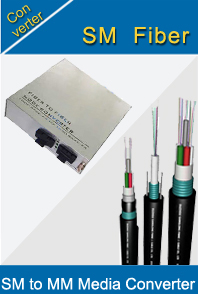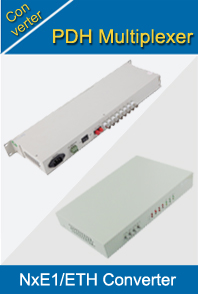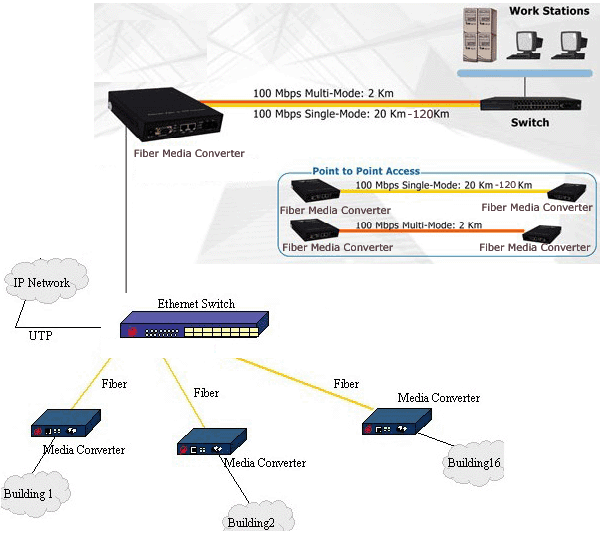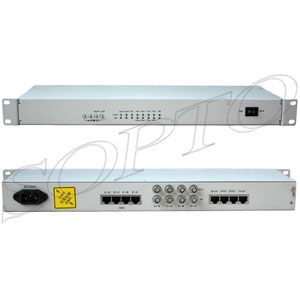-

- Sopto Home
-

- Special Topic
-

- Converter Knowledge
-

- T1 and E1 Interfaces Overview
Converter Knowledge
- Form Factors and Application of Ethernet Media Converter
- Ethernet over 4 E1 Converter Brief Introduction
- What is the Difference between RS232 and RS485 Serial Interfaces
- What is the Difference between RS232 and RS485 Serial Interfaces
- How to Convert an Analog Telephone to VoIP Protocol?
- How to Find the Internet Protocol Address and Media Access Contr
- How to Convert from Fast Ethernet to Fiber Optics?
- How to Connect a Fiber Converter?
- How to Convert Ethernet to Fiber Media Converters?
SOPTO Special Topic
Certificate



Guarantee
Except products belongs to Bargain Shop section, all products are warranted by SOPTO only to purchasers for resale or for use in business or original equipment manufacturer, against defects in workmanship or materials under normal use (consumables, normal tear and wear excluded) for one year after date of purchase from SOPTO, unless otherwise stated...
Return Policies
Defective products will be accepted for exchange, at our discretion, within 14 days from receipt. Buyer might be requested to return the defective products to SOPTO for verification or authorized service location, as SOPTO designated, shipping costs prepaid. .....
Applications
An Ethernet to Fiber Media Converter can also be used where there is high level of electromagnetic interference or EMI which is a common phenomenon found in industrial plants. This interference can cause corruption of data over copper-based ethernet links. Data transmitted over fiber optic cable however is completely immune to this type of noise. An Ethernet to Fiber Optic Converter therefore enables you to inter-connect your copper-ethernet devices over fiber ensuring optimal data transmission across the plant floor.
SOPTO Products
- Fiber Optic Transceiver Module
- High Speed Cable
- Fiber Optical Cable
- Fiber Optical Patch Cords
- Splitter CWDM DWDM
- PON Solution
- FTTH Box ODF Closure
- PCI-E Network Card
- Network Cables
- Fiber Optical Adapter
- Fiber Optical Attenuator
- Fiber Media Converter
- PDH Multiplexers
- Protocol Converter
- Digital Video Multiplexer
- Fiber Optical Tools
- Compatible
Related Products
Performance Feature
Converter Knowledge
Recommended


T1 and E1 Interfaces Overview
T1 Overview
T1 is a digital data transmission medium capable of handling 24 simultaneous connections running at a combined 1.544 Mbps. T1 combines these 24 separate connections, called channels or time slots, onto a single link. T1 is also called DS1.
The T1 data stream is broken into frames. Each frame consists of a single framing bit and 24 8-bit channels, totaling 193 bits per T1 frame. Frames are transmitted 8,000 times per second, at a data transmission rate of 1.544 Mbps (8,000 x 193 = 1.544 Mbps).
TDMOIP N x E1 Protocol Converter
As each frame is received and processed, the data in each 8-bit channel is maintained with the channel data from previous frames, enabling T1 traffic to be separated into 24 separate flows across a single medium. For example, in the following set of 4-channel frames (without a framing bit), the data in channel 1 consists of the first octet of each frame, the data in channel 2 consists of the second octet of each frame, and so on:
|
|
Chan. 1 |
Chan. 2 |
Chan. 3 |
Chan. 4 |
|
Frame 1 |
[10001100] |
[00110001] |
[11111000] |
[10101010] |
|
Frame 2 |
[11100101] |
[01110110] |
[10001000] |
[11001010] |
|
Frame 3 |
[00010100] |
[00101111] |
[11000001] |
[00000001] |
E1 Overview
E1 is the European format for DS1 digital transmission. E1 links are similar to T1 links except that they carry signals at 2.048 Mbps. Each signal has 32 channels, and each channel transmits at 64 Kbps. E1 links have higher bandwidth than T1 links because they use all 8 bits of a channel. T1 links use 1 bit in each channel for overhead.
T1 and E1 Signals
T1 and E1 interfaces consist of two pairs of wires—a transmit data pair and a receive data pair. Clock signals, which determine when the transmitted data is sampled, are embedded in T1 and E1 transmissions.
Typical digital signals operate by sending either zeros (0s) or ones (1s), which are usually represented by the absence or presence of a voltage on the line. The receiving device need only detect the presence of the voltage on the line at the particular sampling edge to determine if the signal is 0 or 1. T1 and E1, however, use bipolar electrical pulses. Signals are represented by no voltage (0), positive voltage (1), or negative voltage (1). The bipolar signal allows T1 and E1 receivers to detect error conditions in the line, depending on the type of encoding that is being used.
Encoding
Following are common T1 and E1 encoding techniques:
- Alternate mark inversion (AMI)—T1 and E1
- Bipolar with 8-zero substitution (B8ZS)—T1 only
- High-density bipolar 3 code (HDB3)—E1 only
AMI Encoding
AMI encoding forces the 1s signals on a T1 or E1 line to alternate between positive and negative voltages for each successive 1 transmission, as in this sample data transmission:
|
1 |
1 |
0 |
1 |
0 |
1 |
0 |
1 |
|
+ |
- |
0 |
+ |
0 |
- |
0 |
+ |
When AMI encoding is used, a data transmission with a long sequence of 0s has no voltage transitions on the line. In this situation, devices have difficulty maintaining clock synchronization, because they rely on the voltage fluctuations to constantly synchronize with the transmitting clock. To counter this effect, the number of consecutive 0s in a data stream is restricted to 15. This restriction is called the 1s density requirement, because it requires a certain number of 1s for every 15 0s that are transmitted.
On an AMI-encoded line, two consecutive pulses of the same polarity—either positive or negative—are called a bipolar violation (BPV), which is generally flagged as an error.
B8ZS and HDB3 Encoding
Both B8ZS and HDB3 encoding do not restrict the number of 0s that can be transmitted on a line. Instead, these encoding methods detect sequences of 0s and substitute bit patterns in their place to provide the signal oscillations required to maintain timing on the link.
The B8ZS encoding method for T1 lines detects sequences of eight consecutive 0 transmissions and substitutes a pattern of two consecutive BPVs (11110000). Because the receiving end uses the same encoding, it detects the BPVs as 0s substitutions, and no BPV error is flagged. A single BPV, which does not match the 11110000 substitution bit sequence, is likely to generate an error, depending on the configuration of the device.
The HDB3 encoding method for E1 lines detects sequences of four consecutive 0 transmissions and substitutes a single BPV (1100). Similar to B8ZS encoding, the receiving device detects the 0s substitutions and does not generate a BPV error.
Sopto offers an extensive choice of full-featured E1 Protocol Converters, like E1 to N x ETH Converter, V.35 to ETH Converter and so on. For the newest quotes, please contact a Sopto representative by calling 86-755-36946668, or by sending an email to info@sopto.com. For more info, please browse our website.





